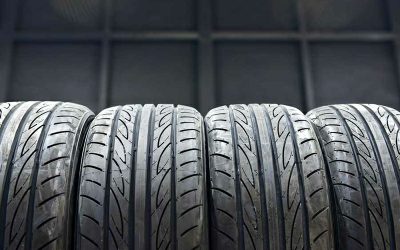Your tires will be slightly off the alignment once every two or three years. Misaligned tires can lead to riding discomfort and tremendous accidents.
So, it is essential to know about this maintenance to have a comfortable and safe driving experience. Scroll down to unfold the advisable steps and actions!
Tire Alignment: What Is It?
A tire alignment means lining up the wheels with each other and the terrain’s surface. The purpose is to have a car easily move in the planned direction.
Adjusting all the suspension angles and axles will change how a tire moves and positions. As a result, the steering wheel will also be under impact.

The usage time might make your vehicle no longer maintain the standard angles that its manufacturer designates.
There are various types of alignments that your vehicle does not need. It heavily depends on the suspension system and its power distribution to the wheels.
For example, if you have an all-wheel-drive or four-wheel-drive automobile, a four-wheel alignment will be a selection. Meanwhile, you should employ a front-end or thrust-angle alignment if your automotive drives on the front or rear wheels.
Avid DIYers might expect to execute it at home, yet it’s advisable to book professional wheel alignment services.
Why Is Tire Alignment Essential?
You should pay attention to maintenance tasks to maintain the good condition of your automobile. And aligning wheels is among the essential things.
In case of misaligned wheels, the chance of a dramatic drop in handling capability is high! It means you cannot turn or move in a straight line.
In simple words, your car disobeys your order! It will tremendously impact not only your ride comfort but also your and your passengers’ safety.
The damage to wheel rims and suspension will result from improper alignment. It can worsen the performance and shorten the lifespan of your automobile.
Specifically, your car will need higher fuel consumption and power than it should. Running on sluggish tires with improper alignment is not an economic way.
Moreover, the lack of wheel alignment makes your vehicle’s tires wear uneven. So, it requires frequent tire replacement, which can cost a lot.
If you do not notice the state of your car and have it fixed, underinflated tires or blowouts can happen. We might not mention how inconvenient and dangerous it can be.
How Long Does A Wheel Alignment Take?
Normally, the wheel alignment process will take about an hour for either two-wheel or front-end alignment. Yet, the time for such a service depends on a vehicle’s status.
Specifically, mechanics will check tire wear, the damaged suspension system, track rod, steering bushing, etc. If it is at a severe level, the process can take longer.
How Often Should You Get An Alignment?

Prevention is better than cure. So, maintenance is much better than repair, which should be a motto of all drivers and car owners!
Instead of waiting for problems to pop up, you can proactively protect your vehicle with regular car maintenance. Wheel alignment is among the tasks you should not skip.
According to many mechanics, you should align your wheels once every two or three years. However, every different vehicle type requires different care. So, it is best to follow the vehicle manufacturer’s manual!
If you do not find the tire alignment recommendations in the manual, you can ask for advice from a service center or auto repair shop!
Noticing your car’s condition can also help you determine when to realign your car’s wheels. If you spot any unusual signals, such as the slow reaction of wheels when turning, you can have it checked.
We list some other signs below that you should notice when driving. As a result, you can get the right timing of wheel alignment!
Sharp Pulling On One Side
This situation might be rooted from under-inflated tires or the wrong alignment of wheels. If your vehicle keeps pulling sharply on one side after you try inflating all tires, it’s when a tire alignment has its moment.
Gently Pulling
Slight pulling is hard to tell, which needs a simple test of driving in a straight line with both hands off the steering wheel. The surface should be rough roads so you can easily find unusual signals.
If there are drifting signs to one side, you should realign your wheels to have balanced and responsive tires.
Vibrating Steering Wheel
There are two possible causes of the steering wheel vibration: unbalanced tires and misaligned wheels.
Whatever the reason is, it is a message from your car that it needs specialized repair or maintenance!
You can have professional mechanics check a vehicle up to find out why and the best solution.
Off-Center Steering Wheel
Another consequence of tire misalignment is a crooked steering wheel. It leads to ride discomfort, which you might adapt to through time.
So, regular maintenance is useful to detect such signs for timely repair.
Uneven Tire Wear
Tires will wear as you drive them on the roads. Yet, the levels of wear should balance!
Otherwise, the air pressure inside the tire will increase due to the excessive wear of tires if you do not pay attention to the tires’ wear patterns.
A regular check of front tires and rear tires can indicate whether the wear is uneven or not! It is time to align your wheels when the difference is too much.
Conclusion
Realigning your wheels is an indisputable task to enhance your car’s performance and extend its longevity.
Hopefully, our article can help you have better car performance and the most comfortable driving experiences!
Although it is not ideal for DIY, learning the whole process and advisable tips can help you gain a proactive role in choosing the best service and maintaining your car’s condition.








